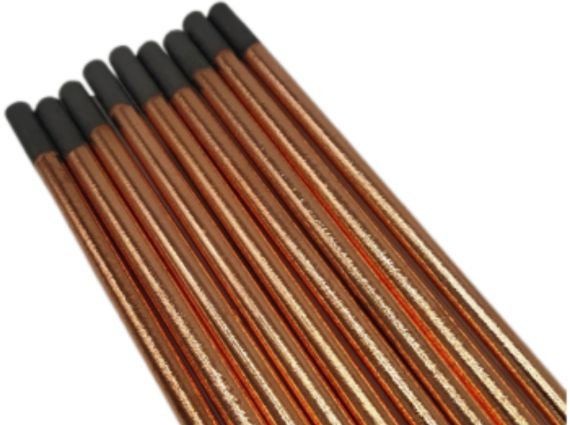What are the reasons for carbon inclusion and slag sticking in the groove after air planing? How to avoid it by adjusting the carbon rod composition or process?

The reasons for carbon inclusion and slag sticking in the groove after carbon arc gouging and the methods to avoid it by adjusting the carbon rod composition or process are as follows:
Causes of carbon inclusion
Gouging speed is too fast: the head of the carbon rod may hit the liquid metal and unmelted metal, causing the arc to extinguish. When the carbon rod is sent forward or lifted upward, the head will fall off and stick to the unmelted metal, forming carbon inclusion.
Causes of slag sticking
Insufficient compressed air and high current: the amount of metal melted is large and concentrated, and the compressed air cannot blow away the molten metal smoothly, so the slag will stick to both sides of the gouging groove.
Gouging speed is too slow: it will cause the amount of metal melted to be large and concentrated, and it is also easy to make the slag difficult to be blown away by compressed air, and then stick to both sides of the gouging groove.
The inclination angle of the carbon rod is too small: it will also make the compressed air unable to effectively blow away the molten metal, resulting in slag sticking.
Methods to avoid adjusting carbon rod composition
Optimizing carbon materials: Selecting carbon materials with high purity and good graphitization to make carbon rods can make carbon rods have better strength and stability at high temperatures, and reduce the possibility of carbon inclusions caused by overheating and softening of the carbon rod head. At the same time, high-quality carbon materials can make arc burning more stable, which helps to reduce slag sticking.
Adding alloy elements: Adding some alloy elements (such as tungsten, molybdenum, etc.) to carbon rods can improve the high temperature resistance and oxidation resistance of carbon rods. These alloy elements can enhance the structural strength of carbon rods, making them less likely to deform and damage under the action of high-temperature arcs, thereby reducing the risk of carbon inclusions and slag sticking.
Methods to avoid adjusting the process
Selecting the appropriate current: Select the appropriate planing current according to the specifications and materials of the carbon rod. If the current is too large, the carbon rod head is easy to turn red, the copper plating layer is easy to fall off, and the metal will melt too much, increasing the probability of slag sticking; if the current is too small, carbon inclusions are easy to occur.
Controlling the planing speed: The planing speed should be moderate, generally 0.5-1.2m/min. Too fast speed can easily cause carbon inclusion, and too slow speed can easily cause slag sticking.
Keep short arc operation: The arc length is generally 1-2mm. Long arc will cause arc instability and even cause arc extinction, which is not conducive to planing quality. Short arc can improve production efficiency and carbon rod utilization, and reduce the occurrence of carbon inclusion and slag sticking.
Adjust the extension length of carbon rod: The appropriate extension length of carbon rod is 80-100mm, and it should be adjusted when it burns to 20-30mm. If the extension length is too long, the blowing force of compressed air to the molten pool is insufficient, and the molten metal cannot be blown away smoothly, which is easy to cause slag sticking; if the extension length is too short, it will affect the operating line of sight and the burning speed of carbon rod.
Control the inclination angle of carbon rod: The angle between carbon rod and workpiece along the planing direction is generally 25°-45°. The larger the inclination angle, the deeper the planing groove; if the inclination angle is too small, it is easy to cause slag sticking. The appropriate inclination angle can enable compressed air to effectively blow the molten metal away from the planing groove and reduce the slag sticking phenomenon.
Ensure compressed air pressure: When gouging, the compressed air pressure should be kept between 0.4-0.6MPa to ensure sufficient blowing force to blow away the molten metal and prevent slag sticking.
Optimize the operation sequence: Compressed air flow should be sent in before arcing to avoid "carbon trapping" in the groove. At the end of gouging, the arc should be broken first, and then the compressed air should be turned off to allow the carbon rod to cool.
Contact: admin
Phone: +86-13665233012
E-mail: service@weldmaterial.com
Add: Huanghua Industrial park, Jiangdu City, Yangzhou , Jiangsu Provicne, China.